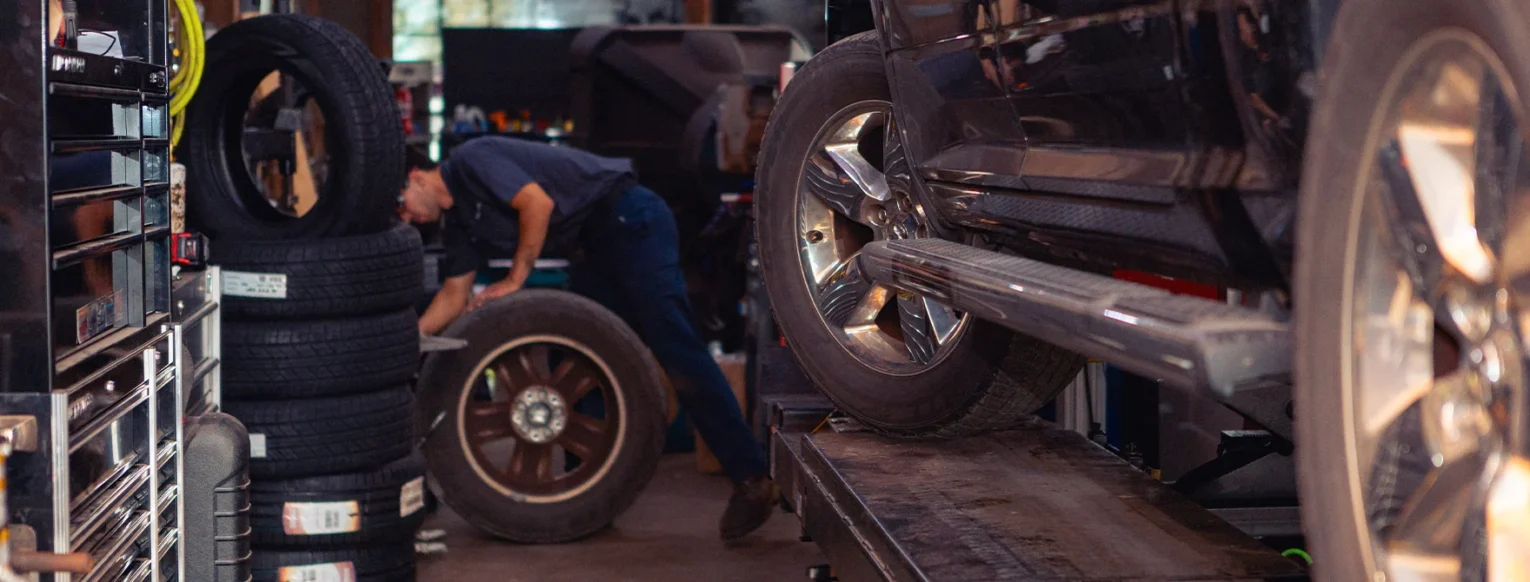Tire rotation is an important maintenance task for both tire longevity and safety on the road. While there are some variations on how often you should rotate your tires, the general recommendation is every 5,000 miles. Most drivers like to have their tires rotated when they have their oil changed. Your vehicle owner’s manual can give you specifics for your vehicle’s recommended tire rotation.
What is tire rotation?
Tire rotation is a strategic shuffling of your car’s tires. Tires will naturally wear down over time and that wear will vary based on factors such as the tire’s placement, vehicle weight distribution, the brand of tire, drivetrain (AWD, FWD, RWD, 4WD), and road conditions. By switching the placement of your tires on a regular basis, you can better disperse the burden of driving so that your tires wear evenly.
The Benefits of Tire Rotation
There are a number of benefits to rotating your tires on a regular basis. Some of these benefits include:
- Extending the life of your tires—By spreading the wear across your tires, you can add longevity to them. Certain spots on your vehicle are prone to earlier wear, like the front driver’s side tire. By rotating them, you can prolong your tire use.
- Improving vehicle performance—Tires are where your car connects to the road. As the tread wears down, this can impact vehicle handling and traction. Because tire rotation spreads the wear around, your tires will maintain traction for a longer period and lead to better vehicle handling.
- Improving fuel efficiency—In addition to better handling, properly rotated tires can help you to improve your fuel efficiency. When one tire is worn unevenly, this can mean the rest of your car has to pick up the slack. As your engine works harder, your fuel efficiency will decrease. You can avoid this with tire rotation.
- Increasing vehicle safety—Traction isn’t only important for vehicle handling. It’s also important for safe driving. By rotating your tires, you can maintain a better grip on the road and avoid slipping, skidding, hydroplaning, and other handling problems.
- Maintaining tire warranty—In some cases, you’ll need to have regular tire rotations to maintain your warranty. Failing to do so may mean losing your warranty and missing out on the benefits provided by it.
- Performing visual inspections—Tire rotation is a great time to inspect your tires for damage and to check the tread wear. You can also check tire air pressure. If you’ve noticed any vibrations or pulling to one side, you can have your tires rebalanced. These are all basic checks that can help you maintain your tires.
Tire Rotation Patterns
The pattern for your vehicle’s tire rotation will depend on a number of different factors. Some of these factors include:
- The type of tire
- Your drivetrain (FWD, RWD, AWD, 4WD)
- Directional and non-directional tires
- The size of your tires
- The type of spare tire you have (full-size v. temporary)
With this in mind, here are some of the most common tire rotation patterns recommended by The Tire and Rim Association, Inc.
Rearward Cross
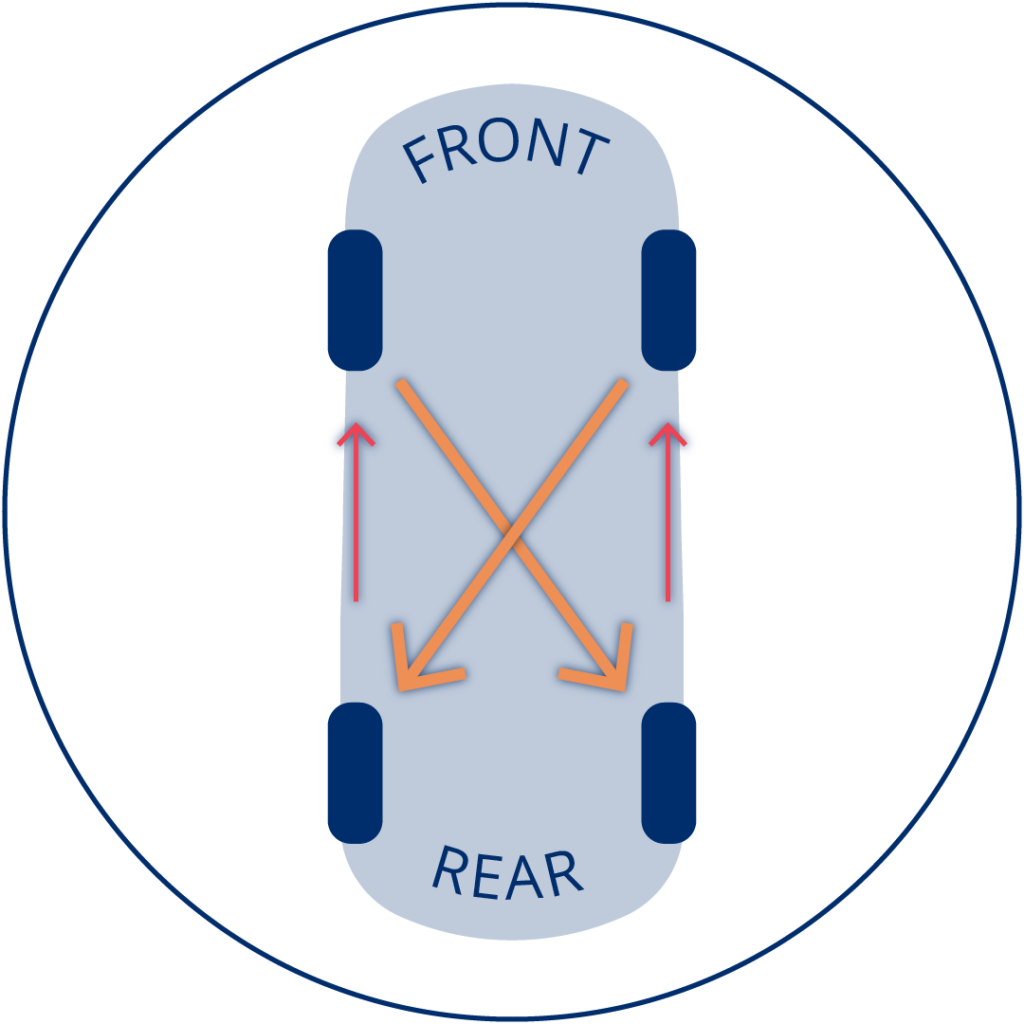
This pattern is generally recommended for vehicles with rear wheel drive (RWD). With this pattern, rear tires move to the front axle and stay on the same side of the vehicle. Front tires will move to the opposite side of the rear axle.
Forward Cross
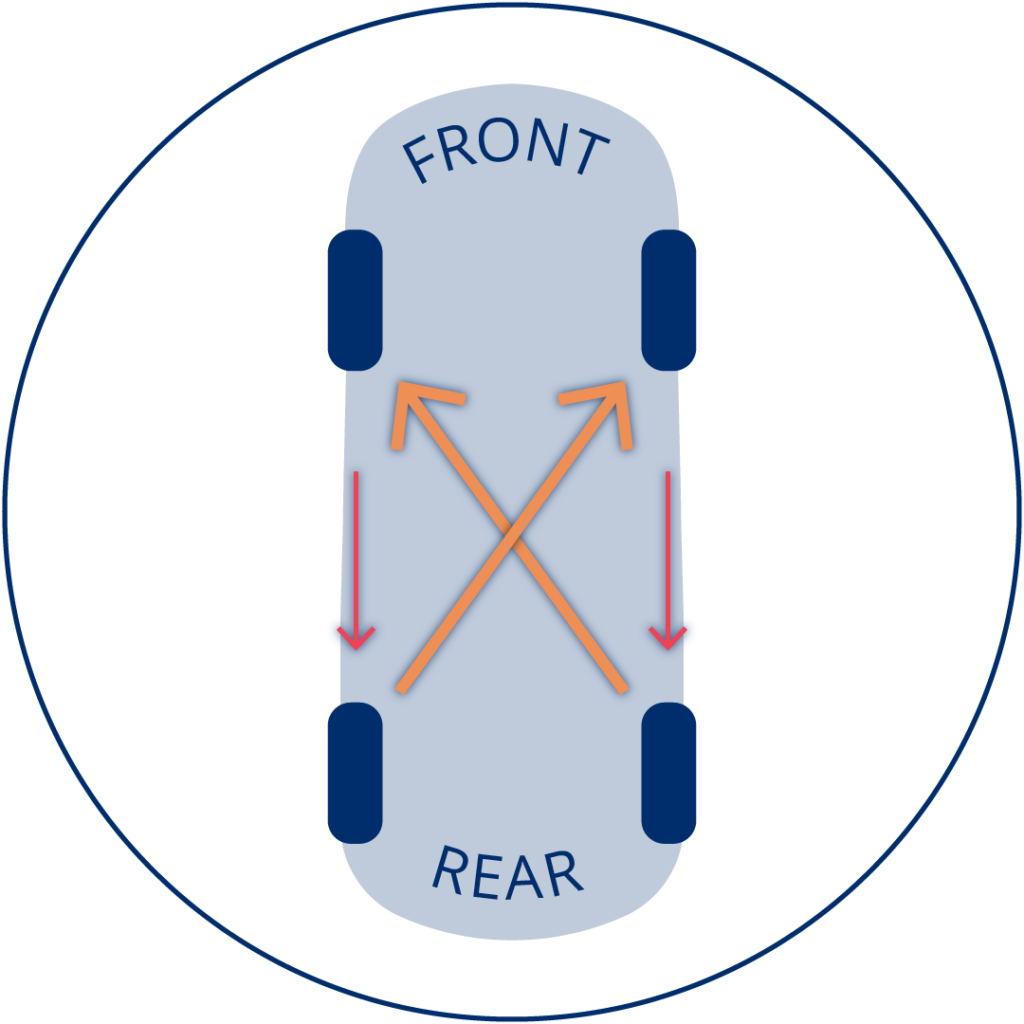
This pattern is generally recommended for vehicles with front wheel drive (FWD). The front axle tires will stay on the same side of the vehicle and move to the rear axle while the rear tires will switch sides as they move to the front axle.
X-Pattern
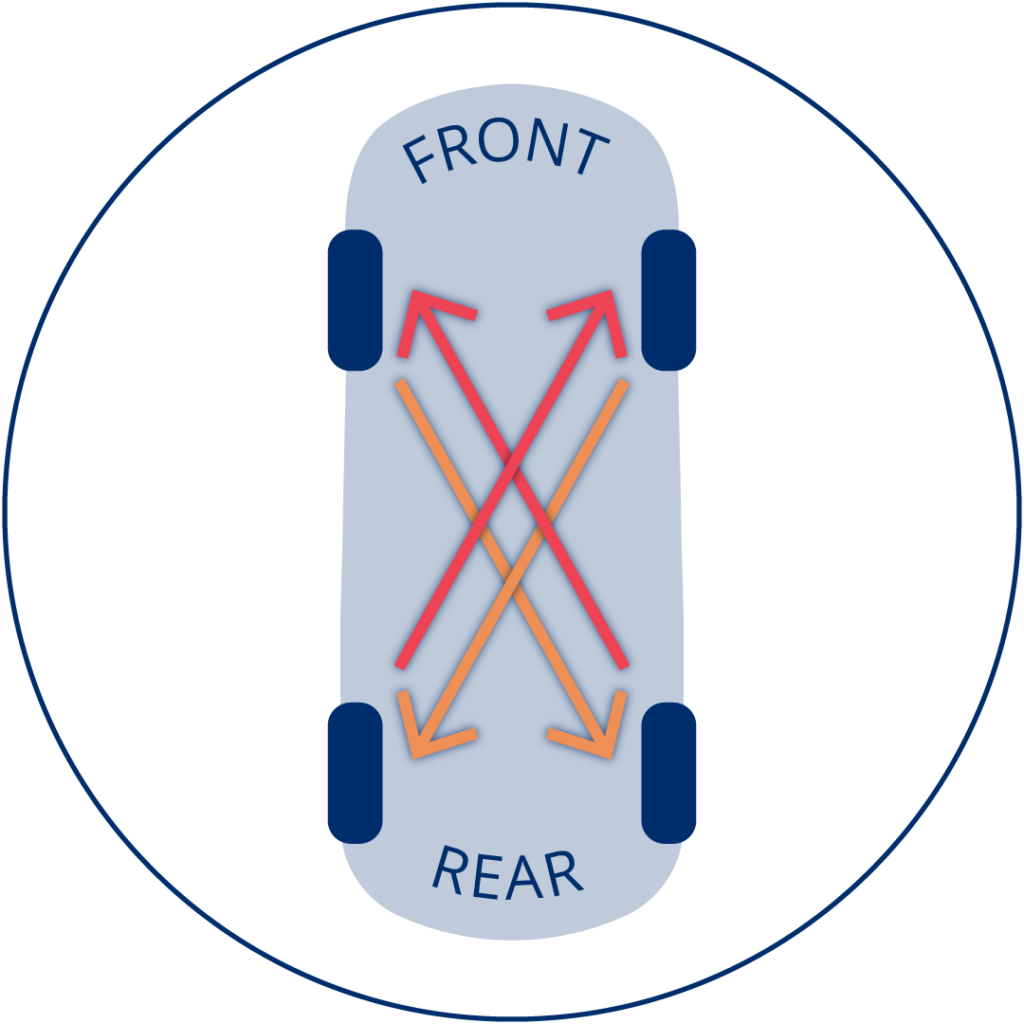
This pattern is generally recommended for vehicles with either 4-wheel drive (4WD) or all wheel drive (AWD). All tires will move diagonally as they swap axles.
Front to Rear
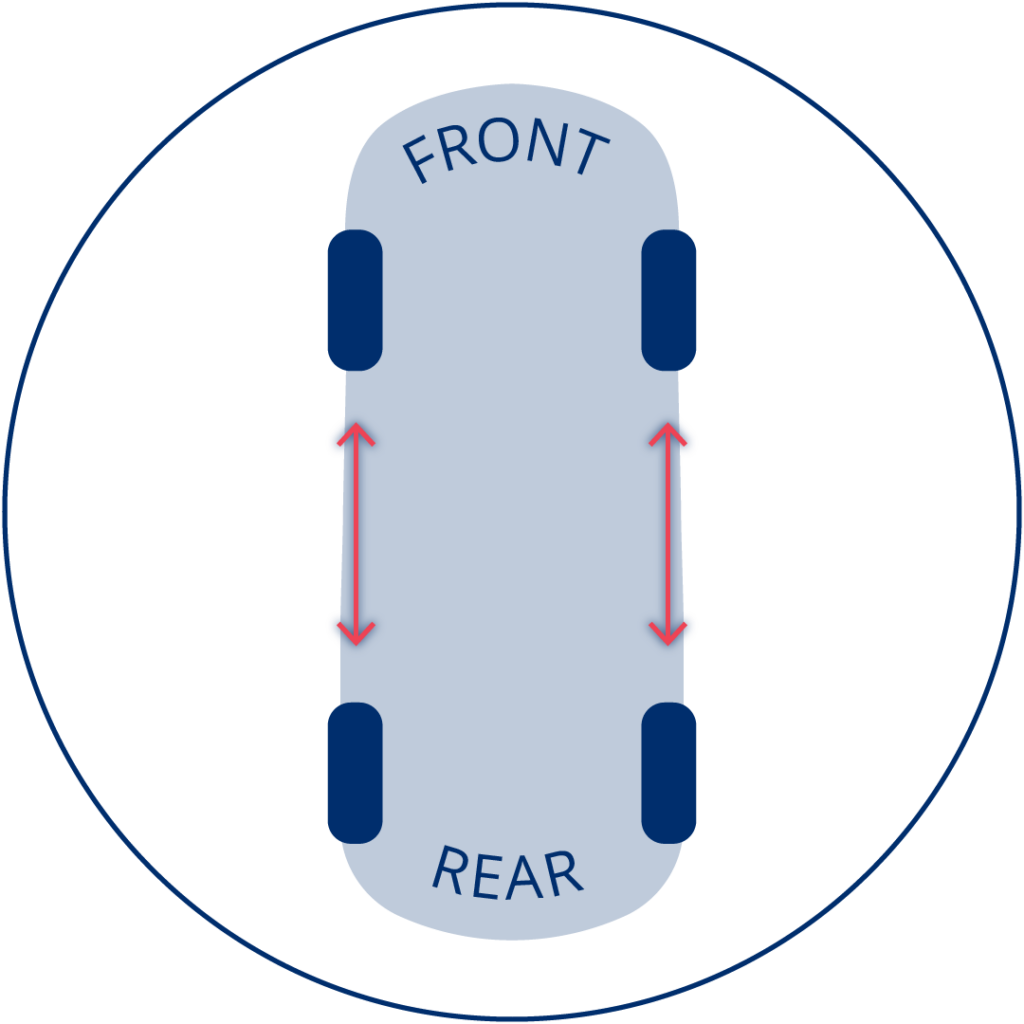
This pattern is generally recommended for directional tires. The tires will stay on the same side of the vehicle, but they will swap axles.
Side to Side
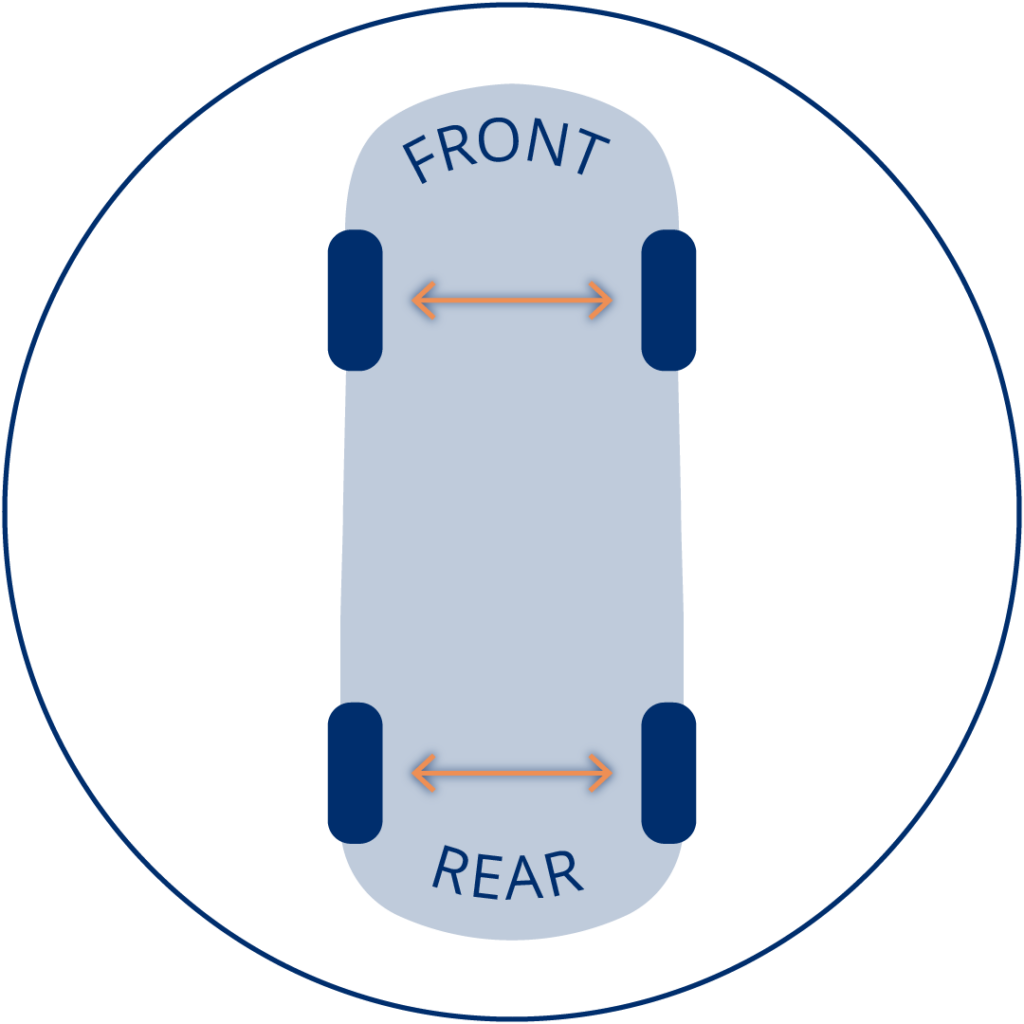
This pattern is generally recommended for performance vehicles with different sized tires. Some vehicles utilize larger tires in either the front or rear, so you can’t rotate them diagonally. You can, however, swap sides of the vehicle while keeping the tires on their respective axle.
Call Restored Auto, LLC to schedule your next tire rotation.
If you need your tires rotated, give us a call. We can help you maintain your tires and extend their lifespan by rotating them, balancing them, performing vehicle alignments, and more. Give us a call today to schedule your next tire rotation.

